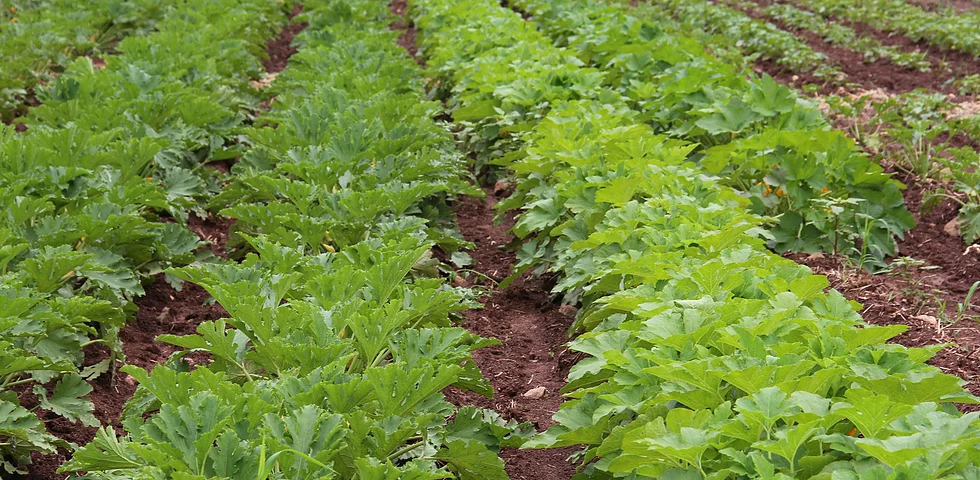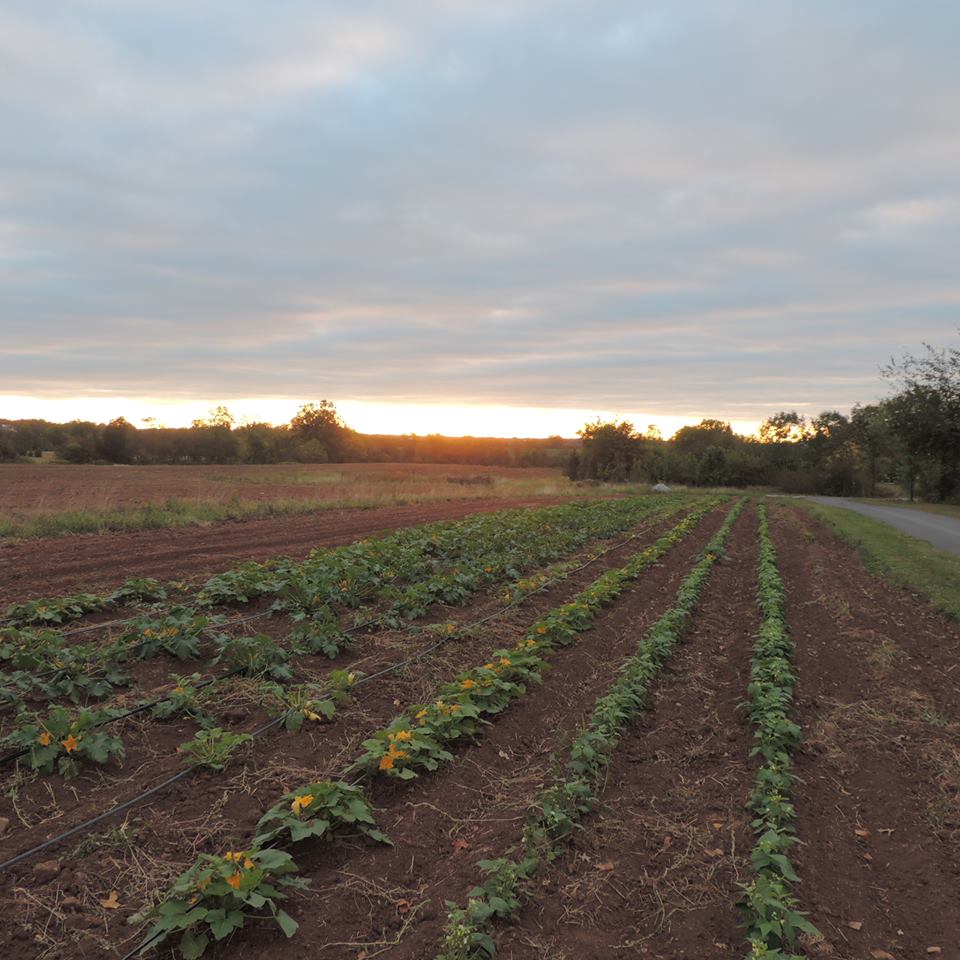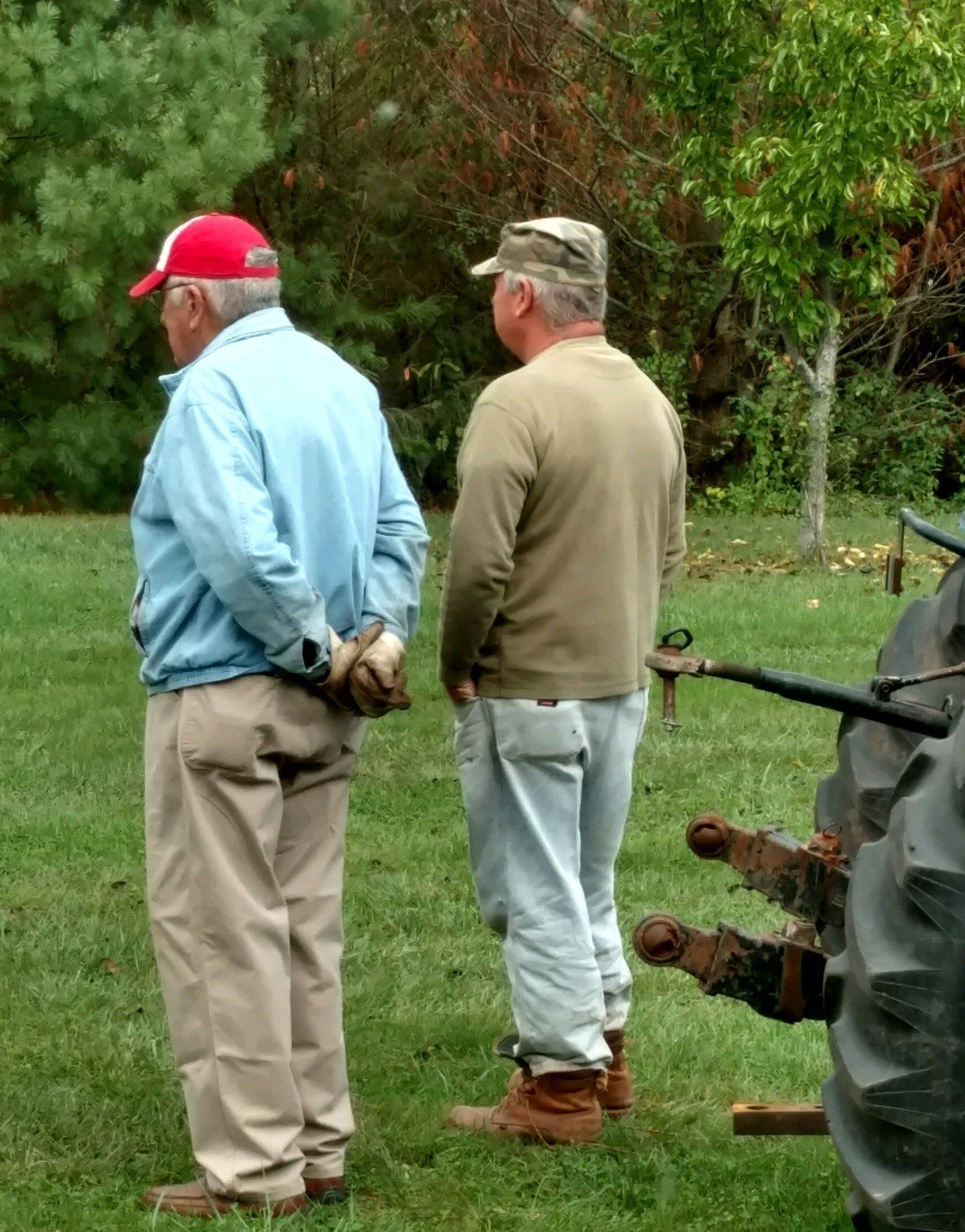Blog

Irrigation – the life blood of plants – water. If you are planning to grow vegetables the first thing you should realize that sunshine, water and CO2 are the basics of any plant growth. Sunshine is pretty much a given, based on your site, CO2 is plentiful although not at optimum levels it is adequate, water however can be much more irregular. When I first started farming I thought I could get around this by applying heavy mulches. While that helps after 60 days of no measureable rain and heat I realize it was not a viable solution. Especially if I wanted to make a living at this. It is so important that when we stopped doing a CSA and I had people what should I look for in another CSA I said “ First off ask if they have irrigation, if they don’t your payment is at significant risk of not being fulfilled.” . Yes water is the lifeblood. Irrigation is a necessary tool if you plan to grow through most season. Most seasons will have at least a 30 day period of reduced rains. Elevated temperatures and/ or constant breezes also increase the need for additional water. Irrigation can come in many forms, from manual watering to full drip systems. Overhead watering also has applications too, even though it can promote plant disease and have food safety implications. If using overhead remember to never water at night or late evening. AM watering is the safest method. Of course overhead is less efficient but we use it in cases where we need water but know the crop is coming out in less than 45 days. It just seems wasteful to move drip plastic into those areas. Crops that run longer get full drip. Overhead will also promote more weed growth than drip. All of these are considerations you have to take into account. We have Komet guns that we can water an area of about 40*120 (3 guns) and move them where we need them. This is not our main system, just the one to address quick issues. Drip is the choice for large applications, using the least amount of water, keep between row weeds reduced and for consistent results. Drip is also gentler on crops. The big guns can beat tender crops into the ground. So what are the considerations on drip tape? Well the two main ones are thickness of tape and flow rate. We have tried different thickness of tape and I really have found no advantage to thicker tapes. They cost more to install and an extra 2 mills does not seem to effect mouse bites much. Mice and other animals are the biggest issue we have with drip tape. In dry seasons they will eat into the tape searching for water. We do not bury our tape, we lay it on top of the ground. Burying would help prevent animal damage to a degree but it makes clean up much tougher. I have not bene very successful over the years of saving large amounts of tape from year to year. It takes up much more space to store once used than when new. It takes a fair amount of labor to reclaim. The following year I spend more time and money fixing leaks than I save. Each splice is about a dollar and if you don’t have mouse proof storage you end up with a lot of splices! As much as I hate the waste of disposing of it the economics don’t really work for me. We got rid of laid plastic mulch several years ago because I hated as much plastic as we used. Drip is another story, and I have not found a better way around just replacing it. Flow rate is another consideration. You need to calculate how long your irrigation runs will be. The flow rate determines how long a run you can make with even emitter drip. Lower flows will yield longer runs. This is often the limitation factor in designing a drip system, that and availability of water at the source. Longer runs, lower emitter flow rates mean longer cycle times to get the required water per plant. It is always better to run your irrigation for longer periods, longer soaks, less often than short soaks every day. We often water on a three day cycle, unless we have gotten behind in water needs due to a breakdown, hot or windy weather or we just got late to the task. Your system will consist of a water source, a pump (maybe more, in our case we pump from our water source to two holding areas, then pump from there to the field to be irrigated. Electric, after initial set up, is always more cost effective to run than gas/diesel pumps. You will have feed lines and header lines. Lines below 1.5” in diameter have high friction loss. Remember a 1 inch line and 1.5 inch line is only ½ inch difference but it is 50% tighter. Header lines can use valves for individual line shut off or just attach with straight connectors. Pressure regulators on your feeds to your header prevent blowing out tape but may not be needed if your feed is a long run. Natural pressure drops may alleviate the need. Feeds running up hill should have a check valve so they don’t drain between each cycle, this saves water and energy. To design a complete system is more than we can cover here, but now is the time to think and plan irrigation. When it is dry and crops are failing it will take too long to implement. Plan ahead, then be able to react is one of the keys to farming

Everyone starts farming for a reason. Most new farmers that did not come from farm backgrounds have dreams of changing to food system, or improving the environment or some just being able to work out side all day. It doesn’t take long in the occupation to realize this can be a very stress full career. Farmers not only have to deal with weather, pest outbreaks, new regulations but the financial reality that this is not a very profitable career choice. It has benefits in many ways but finance is usually not one of them. It is one of the main reasons that farmers consistently rank in the top 10 of occupations for divorce and suicide. Whatever the reason you start farming the reality is if you don’t quickly realize it is a business, and unless you have other income sources you will not be in business long if you don’t treat it as such. Whatever your motivations for farming are, the change you wish to make, the people you wish to help, the lifestyle you wish to live stops when you go out of business. So cold as it may seem, staying in business is number one priority. That doesn’t mean hook or crook business. That means an business with integrity and a financial balance sheet that lets you farm another day. With that said you have only one choice to be profitable. Make more than you spend. Kind of obvious, like the team with the most points wins at the end of the game. So based on this you need to either concentrate on making more or spending less. A word to the wise, very few businesses every cut their way to profit. You either cut costs to reduce a loss, or cut costs to make more profit. The idea of cutting costs to go from loss to profit rarely works for long. The problem with small revenue businesses is that they have a hard time carrying overhead, yet alone making a profit. A small farm can have a lot of overhead. Infrastructure (High tunnels, wells, roads, buildings etc), labor, machinery, irrigation all are part of your overhead. You need to have them whether you have a crop to sell or not. Some of these costs are consistent no matter how large or small the crop. One way to lower costs is to take advantage of preseason discounts, Fertilizer, seed and irrigation supplies will at times offer a preseason discount to get your order early. You order and pay early in the season and they will discount up to 5% typically. Many times these discounts are graduated, 5% month one stepped down by 1% each month until season starts. Some companies start these in October of the year prior. This gives them cash flow in a slow time and helps them plan demand so they get a better idea of what inventory to carry. This is where the rich tend to get richer. If you have made money the previous year you have money to spend to save money. If you have credit available from other sources you can take advantage of the discounts too. Of course you have to calculate the cost of credit vs the cost savings of buying early. If you are barely getting by then you will have to pass on these discounts. A way of lowering costs escapes you because your business is not strong enough to take advantage. Another advantage of taking these discounts early is tax buying. By buying a product in the year prior to use you can use it as an expense to lower your current years income and thus tax burden. This is only applicable if you made enough money to have a tax burden. You also need to be aware of the situation. For example, are taxes and my profits going up? Maybe I should save that deduction till next year? You need to have a real time view of your financial situation to do this. A pile of checks and receipts not in your accounting program will be of little help in making this decision. Finally another way to lower your costs, especially on seeds is to have an account with a company. Now realize the bigger you are the more this helps. If you are buying $10K worth of seeds a year, you have a company’s attention. If you are buying $5K they are still interested. If you are buying $100 it’s not of significance to them. Start early though, explain them you are growing and if realistic you will be up over a $1000 soon. Set up an account, get an account executive to work for you if they have them. It costs you nothing and saves dollars. Sure it is easy to buy seeds off a web site, but you never get the best price that way. Going through an executive gives you better pricing if available, an advocate to search for seeds they don’t even list on a web site and sometimes other perks like reduced shipping. Sometimes you can get extended terms too. We have been offered no pay till July terms by some companies. That really helps to actually harvest something to sell to pay for the seeds instead of buying, planting and waiting. Build a relationship. You should do this too with a local hardware store, machinery supplier, any business you plan on doing regular business with. When you have an account you are a step ahead of the guy walking in the door new. Do the business set up now, in winter, when you have time to fill out the paperwork. It will save you money later. It also saves time if you have an account with a vendor and send someone else to pick up, then call ahead and say just put it on my account. You will usually get 30 day terms. A great way to bridge a short gap to profitability, like when you need boxes to ship and you know you are going to be paid in less than 15 days for the product. Taking the most advantage means you need to work yourself into good financial shape ahead of time. This is the way to boost profitability but if you are operating at a loss, most of these tricks are out of reach to your operation.

At this time of year the most successful thing you can do as a farmer or gardener is to plan ahead for the coming season. I believe the best way plan is to start at what your goal is and work backwards. For a farmer that means lining up customers and getting a strong indication of demand. For a gardener estimating what you want to produce and when. My crystal ball is no better than anyone else's, but indications are for choppy seas ahead. The rule of any small farm is to have it sold before you plant it, or at least a strong promise that it is sold. Generally we spend the winter talking to customers and getting an idea of how we can improve, what is changing in their business and what we can do to help them. You need to have a real discussion now, when you as a farm have time to make an in depth plan. It is also in today’s world more important than ever to line up supplies (seed, soil mixes, pots, fertilizers, irrigation equipment, etc.) early. A farm business needs to look at its available cash and credit lines, spend them wisely to bring in supplies. Covid has proven to us how the supply chain can be disrupted. Debt of governments make price stability even more uneven. The increased demand for growing materials as amateur and professional alike expand their desires while the supply side is reduced by Covid induced supply restrictions makes for an unstable market and increased pricing. Good planning, good budgeting and an experience feel for what you are trying to accomplish can help calm the seas. 2021 looks to be as choppy if not more than 2020. We are already seeing shortages and long lead times on needed supplies. Plan ahead now! Generally we take what we want then factor is 20% more to account for weather variations and other things that can affect our yields. Getting to understand this with confidence will take several seasons but we all have to start somewhere. I once had a friend that asked me why I ever made a plan, things never went according to my plan so why bother. I tried to explain the plan was a base, something to adjust from. Something that contained my research so I could take those numbers, use them with confidence then adjust up or down by a percentage. Not having a plan is like not having a budget, then it’s just a WAG, with a big Won wag. Nothing goes according to plan or budget. Not having one just means you are riding the waves on a guess and that causes most people to drown. Even for a small garden a plan, with a measured plot, estimated yields, estimated supply needs helps you work towards an obtainable goal. So sit by the fire, with a pencil and paper, or as we do it with a laptop and spreadsheet and get started on your plan. Work out the math, because without the math it’s just a guess. The margin for error allow by guessing is reduced in today’s world.

It all started with two farmers, two different generations, sharing things they have seen and accomplished in their life. My Dad and I often talk about how most of the world is disconnected from the reality of where their food comes from. How they do not know the challenges, effort and hard work it takes to bring food to the table. Farmers are often skilled in many areas, it is because they have to be. There is not enough money in farming to be left at the end of the day, when the crops are sold to pay for all the support services needed to run a business as demanding as a farm. Farmers are mechanics, fabricators, engineers, business people, accountants, marketers, HR managers, marketing managers, IT support and much more. They have become self-sufficient out of a need to be that way. That self-sufficiency at the end of the day brings a calm about life. When your back is against the wall you know you can count on you. I have said many times in my life “I have been pushed to the cliff, looked over the edge and work my way back to stable ground. I am no longer afraid of going there.” My Dad and I agreed it would be a shame not to share that knowledge with those who desire to learn. In today’s world there is much anguish. Things are happening all around that we cannot control and feel helpless. Covid, politics, financial and more circle through a media wind all whipped up to attract our attention from other hurricanes on the map. The calm of knowing you have the knowledge and skills to be self-sufficient at least in some of your life becomes a calming breeze. Growing good healthy food, working with your hands, absorbing the enriching rays of the sun, exercise and the accomplishment of sweating out a good day’s activity tend to remove us from the winds, shelter us back to where it is just a breeze. So today, with the events of the world unfolding I decided it is time to Genesis that knowledge to those who which to receive it. I intend to share the knowledge of all aspects of small farming and gardeners. Some will detailed, some philosophical, and all based in practical firsthand experience of getting my hands dirty and making life grow. If you find this valuable, entertaining and results filled please pass our blog along. We hope a whole herd of growers can help spread good food and calm in the world of today. If you are in this as a business, I hope to save you some money. If you are in this as a gardener, I hope to advance your skills to produce a bounty to share. So therefore , In the beginning… (TBC)
